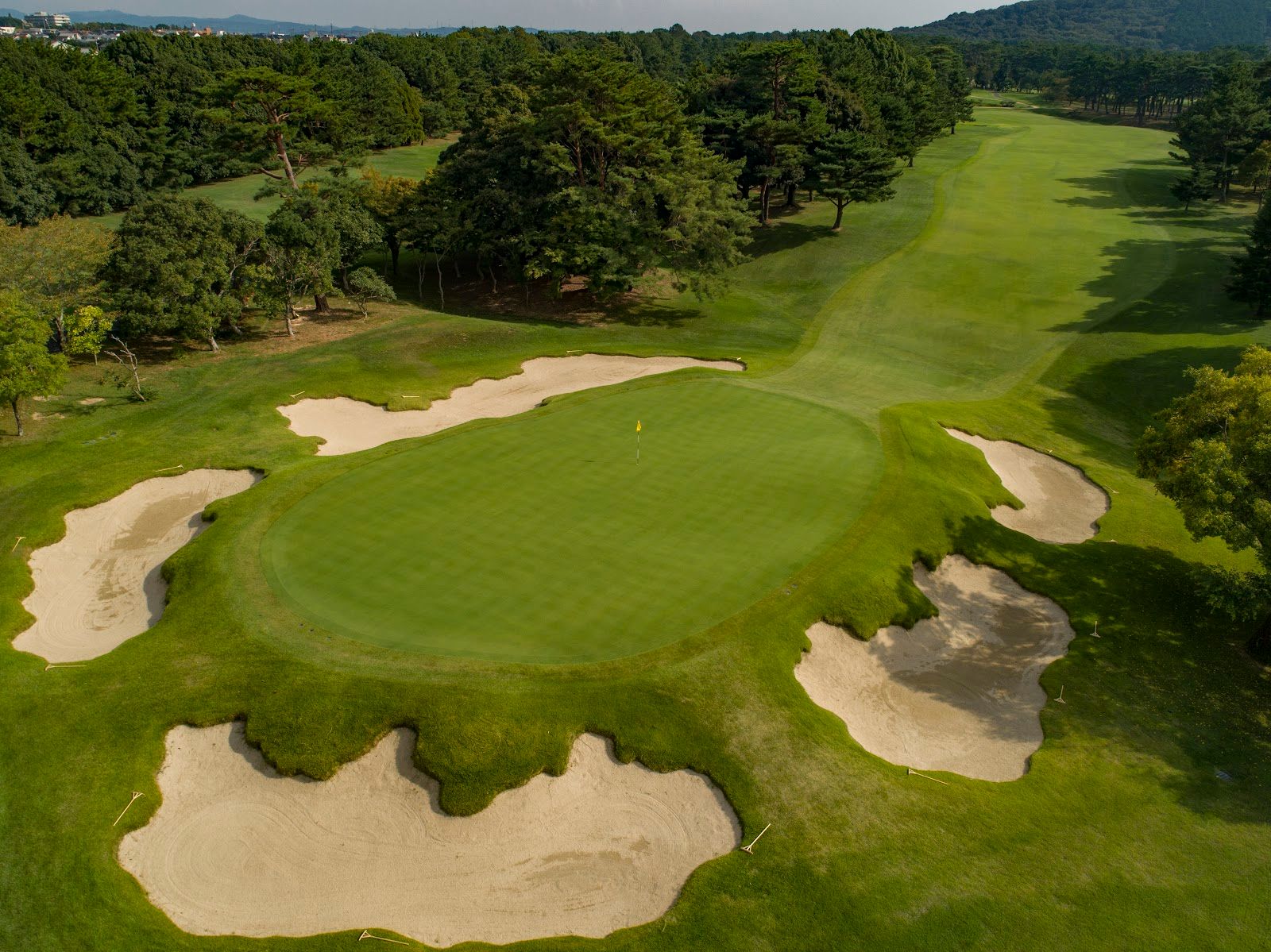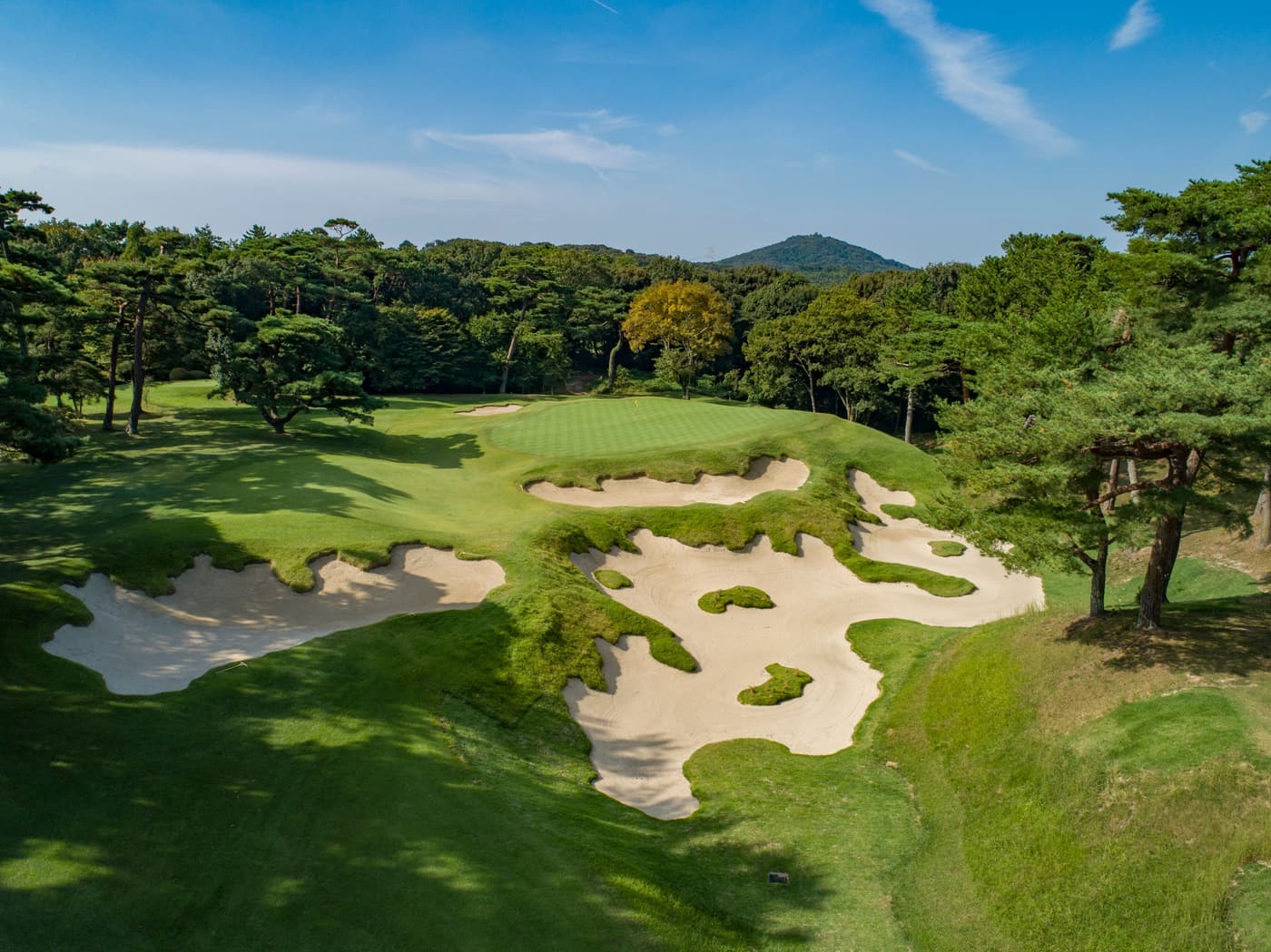- AddressJapan, 〒673-0541 Hyogo, Miki, Shijimichō Hirono, 7-chōme−3−3
- Championships hosted
Hirono Golf Club was founded in 1932 and an Englishman called Charles Alison, who was responsible for the design of many of Japan’s great courses, laid it out. This intensely private Japanese members club is located about fifteen miles northwest of the city of Kobe, which is Japan’s most important seaport. Sadly, Kobe hit the news headlines in 1995 for the wrong reasons after an earthquake, measuring 7.2 on the Richter scale, devastated the area of Hyogo killing more than 5,000 people.
Natural disasters tend to place golf clubs and courses into perspective but Hirono is the most important golf course in Japan and it’s the yardstick for which all other golf courses across the whole of Asia are measured. Charles Alison and Harry Colt fashioned some of Britain’s greatest golf courses and Alison used all of his knowledge and design skill to create the magical Hirono, which would not look out of place along England’s Surrey/Berkshire sand belt.


“Sadly, Hirono was requisitioned by the Imperial Air Force as a runway during the Second World War, destroying much of the course,” wrote Henry Lord & Peter Pugh in Masters of Design. “After the conflict a huge restoration project was carried out by Toyohiko Inui and Osamu Ueda (designer of the prestigious Koga golf course) using Alison’s original plans. In many ways this was a great success, but some of Alison’s intentions were lost. For example, a lot of the rugged sandy wasteland was converted into ordered grass-faced bunkering, and aggressive tree planting has since left the course with a distinctly parkland feel. Nevertheless, Hirono still ranks as the best course in Asia and many of its holes provide a truly incredible test of golfing skill.”
Hirono has played host to all the major Japanese championships and, although it measures a mere 6,925 yards from the back tees, it’s a supreme test of golf. It just goes to show that if you employ clever and thoughtful design, you don’t need to fashion a 7,500-yard monster to create challenge and intrigue. We must briefly mention the green sites at Hirono. They are pure magical theatre, with most raised proudly on plateaux, protect jealously by deep bold bunkering.
There are far too many brilliant holes to discuss at length, but we’ll first mention the par three 13th which is rather similar to “Golden Bell” the famous 12th at Augusta National, but we think Hirono’s 13th is more natural and dramatic.
The book 500 world’s greatest golf holes by author George Peper and the editors of GOLF magazine features the 565-yard par five 15th at Hirono: “As it’s a dogleg left, any attempt to shorten the hole by taking a line across the corner is thwarted by the placement of a fifty-year-old, one-hundred-foot Kuromatsu (black pine) that stands in the left half of the fairway. In the rough to the right side of the landing area, three bunkers punish drives that leak in that direction. This forces all tee shots to the right half of the fairway and ensures that the hole’s 565 yards will be directly confronted and negotiated. From the tee, the first of two natural ravines faintly appears in the distance, defined by characteristically ragged Alison bunkers cut into the facing. The second ravine is gentler and its slope provides the defining front lines to the putting green, as do its two bunkers. Two additional bunkers lend depth perception and guard the rear of the green.”
"The property is the perfect combination of rugged, yet walkable terrain, wrote Tom Doak in The Confidential Guide to Golf Courses . “Ravines at the top half of the property set up the driving hazard for many of the longer holes, and then lead to the large ponds at the bottom that serve as punctuation for the short 5th and 13th. However the club has let the trees surrounding the holes encroach too tightly in recent years, and we hope the recently announced restoration by Martin Ebert will be allowed to address this.”
Mackenzie & Ebert commented as follows: “The course he [Alison] routed (the layout plans and green plans have been preserved in the Club records) is regarded as one of the worldwide classics and the bunkering shown in the early photographs of the course is remarkable in its detail and naturalness of appearance.
The opportunity to follow in the footsteps of Charles Hugh Alison in travelling to Japan to provide input to a course which has meant so much to Japanese golf is a real landmark for Mackenzie & Ebert. The focus of the brief is to restore the old features of the course but also to make it a suitable challenge for the best golfers.”
You’ll find it tricky to get a game here at Hirono but they say that all the best things come to those who wait. When you do eventually get a game and you’ve sunk your final putt, remember to take a look at the famous little golfing museum, which is located next to the colonial-styled clubhouse.
Course Reviews
Leave a Review
This course has not been reviewed.
If you have played this course, consider .
Thanks for the review
Your review has been successfully submitted and will be reviewed for approval.
Course Reviewed
You’ve already submitted a review for this course.
Course Architect
View All
Alison studied history, law and divinity at Oxford and represented the university in Varsity matches. In one of these contests he famously pitched onto Woking’s 18th green from the clubhouse verandah roof.




